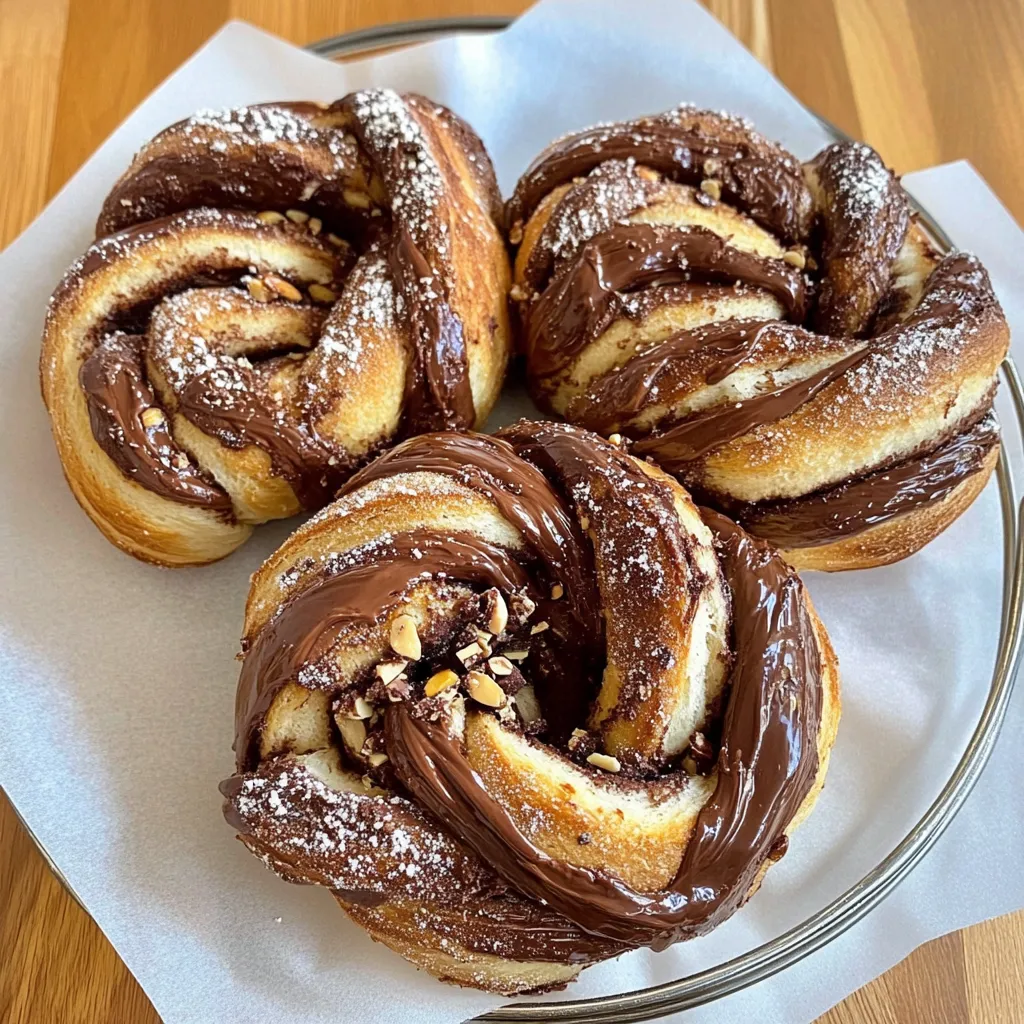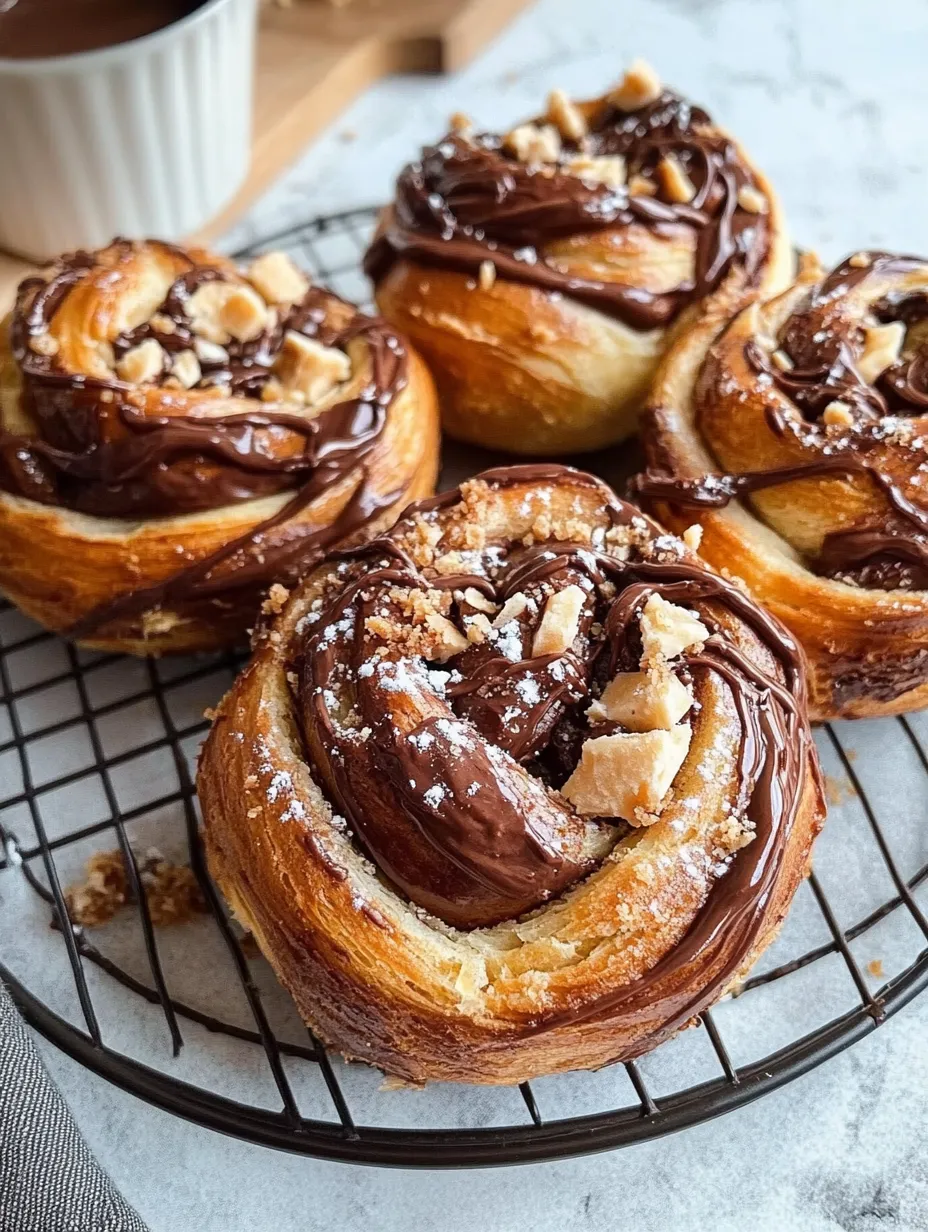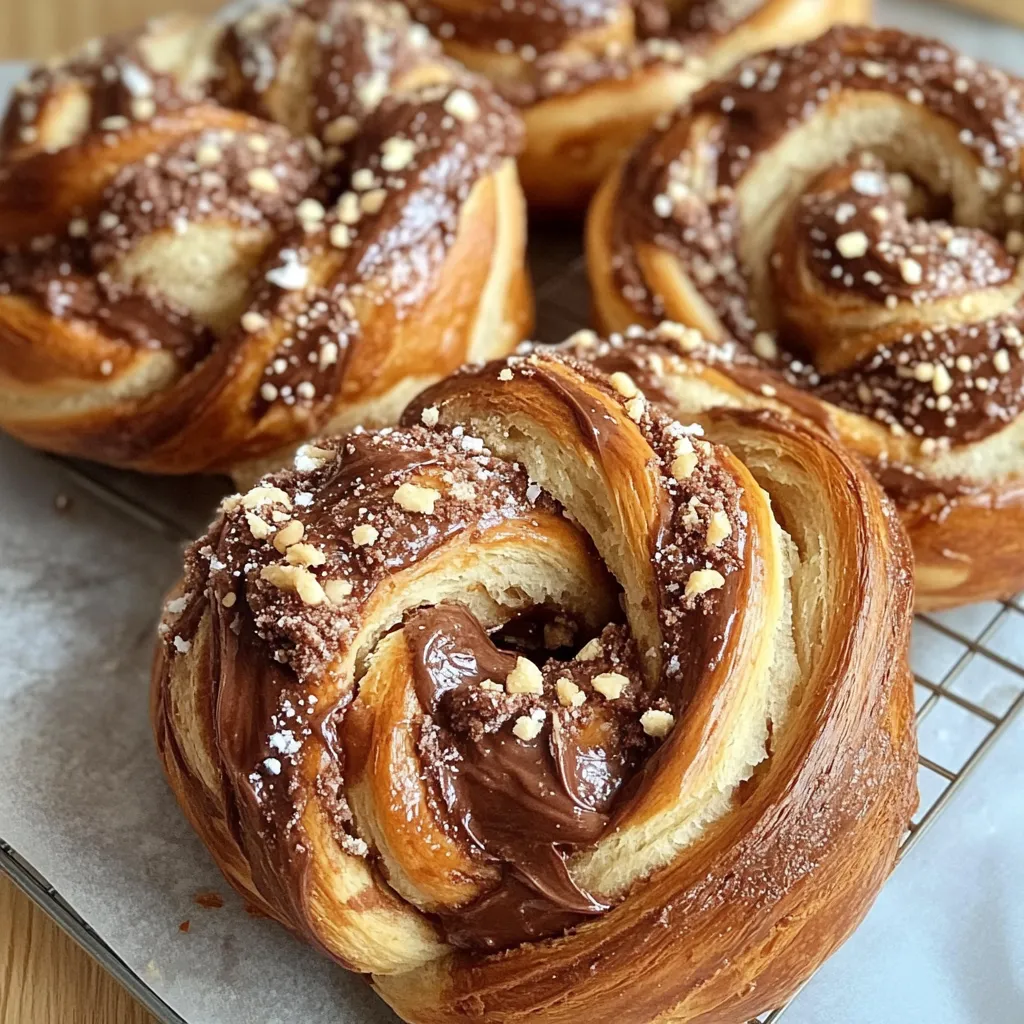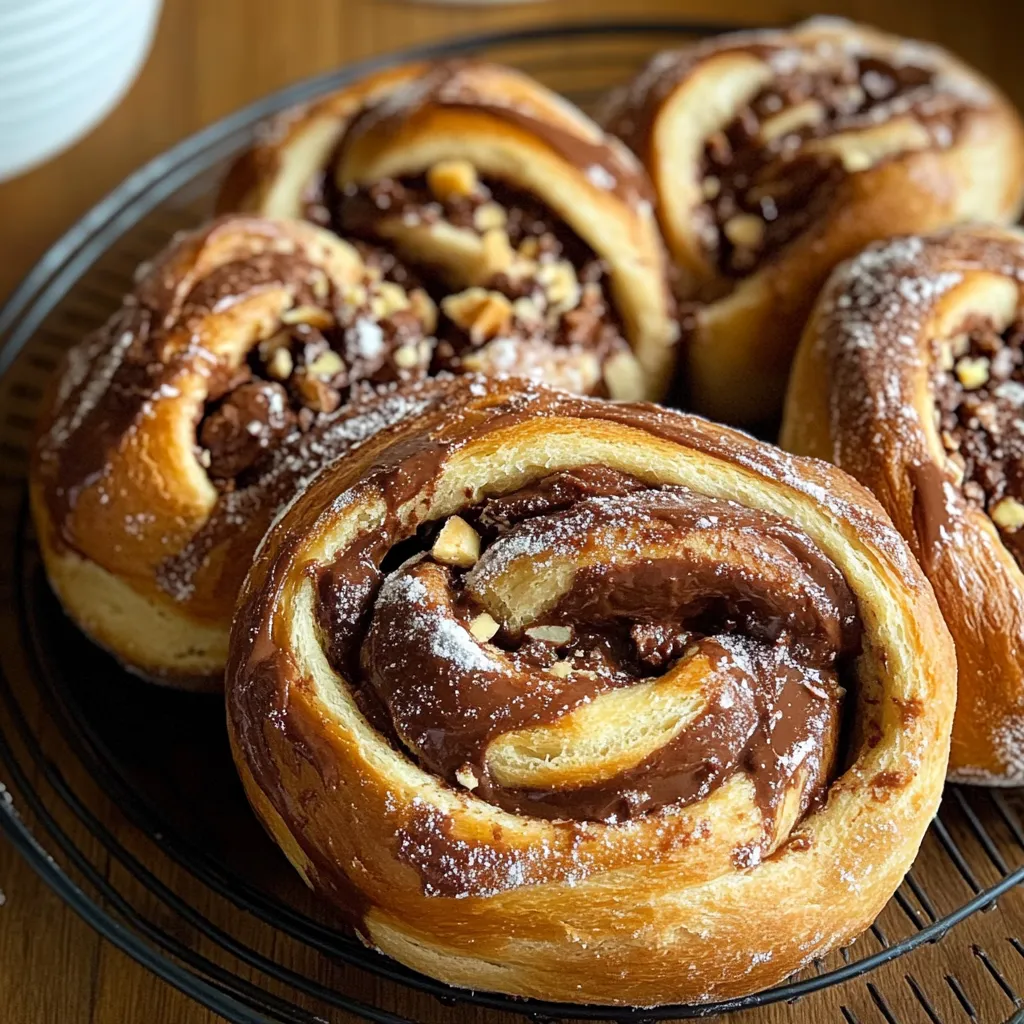 Pin it
Pin it
The marriage of chocolate hazelnut spread, crumbled halva, and enriched dough creates an irresistible breakfast treat. These babka buns showcase the perfect balance between tender, yeasted dough and rich, nutty fillings. Each spiral delivers layers of Nutella, pistachio halva, and melted chocolate chips that create an unforgettable texture and flavor experience.
Last weekend, these buns stole the show at our family brunch. The combination of Middle Eastern halva and Italian Nutella created a fascinating fusion that sparked conversations about global pastry traditions.
Essential Ingredients
- Active Dry Yeast: Fresh yeast ensures proper rise
- Room Temperature Butter: Softened but not melted
- Warm Milk: Temperature between 110-115°F activates yeast
- Pistachio Halva: Choose fresh, crumbly texture
- Quality Nutella: Room temperature spreads easier
- Vanilla Bean: Optional but adds complex flavor
Through countless batches, I've learned that room temperature ingredients and proper kneading create the perfect dough texture.
Detailed Instructions
- 1. Dough Making:
- Begin with precisely warmed milk (110-115°F) - too hot kills yeast, too cool prevents activation. Combine dry ingredients first, ensuring even distribution of salt and sugar. Cut butter into small cubes for easier incorporation. When adding eggs, beat at medium speed exactly 2 minutes - this develops gluten structure. Knead dough until it passes the windowpane test - stretch a small piece until translucent without tearing. First rise requires patience - look for doubled size and a slight indent when poked.
- 2. Filling Preparation:
- Warm Nutella slightly for easier spreading - 10 seconds in microwave suffices. Crumble halva by hand for varied texture pieces. Too fine loses texture, too chunky creates uneven distribution. Layer fillings strategically - thin Nutella layer first, then sprinkle halva and chips evenly. Leave clean borders for proper sealing. Room temperature ingredients spread more easily and prevent dough tearing. The ratio matters - too much filling leads to messy rolls and uneven baking.
- 3. Shaping Technique:
- Roll dough rectangles to even thickness - consistent size ensures even baking. When cutting filled rolls lengthwise, use sharp knife and single, decisive cut to maintain clean edges. Twist with cut sides up, showing filling pattern. Creating the knot requires gentle handling - too tight restricts rise, too loose unravels during baking. Tuck ends securely underneath. Place buns with enough space for expansion during second rise - at least 2 inches apart.
- 4. Baking Process:
- Preheat oven thoroughly before baking. Position rack in center for even heat distribution. Watch for golden brown color, but don't rely solely on appearance - bottoms should be deeply golden. Test doneness by lifting a bun slightly - bottom should be firm and colored. Apply sugar glaze while buns are hot for best absorption. Cool on wire rack to prevent soggy bottoms.
- 5. Troubleshooting Guide:
- If dough feels too sticky, add flour gradually - one tablespoon at a time. For tough dough, let rest 10 minutes before continuing to knead. Filling leakage usually means overfilling or loose rolling. If buns unravel during baking, they weren't tucked tightly enough. Pale crust indicates too low oven temperature; too dark means too hot. Dough not rising? Check yeast freshness and milk temperature.
- 6. Serving Suggestions:
- Serve buns slightly warm - 10 seconds in microwave revives freshly baked texture. Pair with Turkish coffee or chai tea for authentic Middle Eastern experience. For brunch, accompany with fresh fruit and whipped cream. Create elegant plating by dusting with powdered sugar and adding fresh mint leaves. These buns shine as part of a pastry board alongside fresh fruit and nuts.
- 7. Storage Solutions:
- Keep buns at room temperature in airtight container up to 3 days. For longer storage, freeze unfrosted buns up to 3 months. Thaw overnight in refrigerator, then warm before serving. If freezing, skip sugar glaze and apply fresh after reheating. Refresh day-old buns by warming and brushing with melted butter. Store halva separately in cool, dry place to maintain texture.
 Pin it
Pin it
Personal Notes: These babka buns represent the perfect fusion of Middle Eastern and European baking traditions. Each time I make them, I'm reminded of my first taste of halva in a Jerusalem market. The delicate balance of textures - fluffy dough, creamy Nutella, and crumbly halva - creates something truly special.
 Pin it
Pin it
Serving Recommendations
Present these buns on a rustic wooden board or elegant cake stand. For breakfast meetings, slice buns in half vertically to reveal the beautiful swirl pattern. Accompany with:
- Fresh brewed espresso or Arabic coffee
- Honey-whipped labneh
- Fresh figs or berries when in season
- Extra crumbled halva for garnish
Storage and Make-Ahead
Prepare dough the night before and refrigerate after first rise. The slow fermentation enhances flavor development. Shape cold dough in the morning, allowing extra time for second rise. For best results, serve same day, but buns can be stored in airtight container for up to three days. Refresh briefly in 350°F oven before serving.
 Pin it
Pin it
These babka buns have become my signature brunch offering, combining traditional techniques with modern flavors. The recipe rewards patience and attention to detail with incredible results that consistently impress guests.
Frequently Asked Questions
- → Can I make these ahead?
- Prepare through shaping, then refrigerate overnight for second rise.
- → Why warm the milk?
- 110-115°F activates yeast without killing it.
- → Can I freeze them?
- Freeze baked buns up to 1 month. Thaw and warm before serving.
- → Is glaze necessary?
- Optional but adds shine and extra sweetness.
- → Can I use different fillings?
- Try other spreads and nuts, keeping similar proportions.
